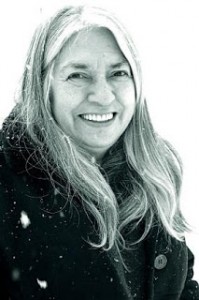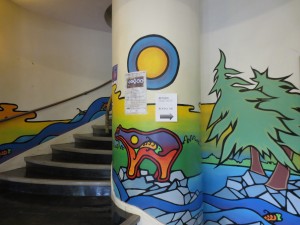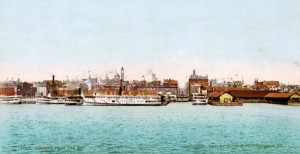Lee Maracle took on the role of Traditional Teacher at U of T in 2008. The day after Toronto nearly drowned in a rainfall that left us all soggy and shell-shocked (remember Last Monday?!), I made my way to Lee’s office at First Nations House. A member of the Stó:lō Nation, Lee is a renowned and award-winning poet, scriptwriter, actor, novelist and performance storyteller, as well as a recognized authority on aboriginal literature, history and peoples.
My goal was to interview Lee, but I had a feeling that I would come away with much more than I could imagine. I guessed right!
Lee offers no clue of her immense scholarly and social influence when you meet her – she invited me into her world with humility, humour and a keen intelligence. Every so often she burst out in this loud, raucous laughter. Just hearing that laughter made me laugh too, and took the edge off of the serious nature of her words.
I was with Lee for one hour, but what an hour. Her teachings come in the form of stories, concentric circles that weave together and unveil a world you didn’t know existed. Sitting with Lee is like peering into a murky pool of water that becomes clearer the longer you listen to her words. You emerge awakened, but with a sense that there is a whole ocean of murky water waiting to be restored.
Lee moved to Toronto 20 years ago. Whenever she decides to stay in a new place, she joins the historical society of that city or town, in order to find out how the land was before being developed. “I have to have a relationship with the land. I have to know what I’m praying for”, she says. Here, Lee prays for Toronto’s waterways.
I remember thinking: what’s up with Toronto’s waterways? Well, right now, you are most probably standing on or near what used to be a river or creek of sorts before the 1850s. The urban Toronto that you know today was once a network of such bodies of water. As Toronto’s population skyrocketed in the late 1800s and early 1900s, these rivers and creeks were diverted into culverts and sewers.
The land above these rivers was filled and transformed into the TO that we know today – houses, malls, stores, paved streets, etc.
Lee tells me how Queens Street used to be the edge of the city, and Dundas Street used to be all marshland. She describes Toronto’s rivers and streams as the blood and veins of the Earth Mother. In the course of city development processes, Toronto managed to block a lot of its natural veins. Much like we cannot rejuvenate our bodies if our veins are blocked, Toronto is now having trouble rejuvenating or regenerating itself.
There is a lot of wisdom and a lot of sadness in Lee’s words. Themes of loss and redemption abound. To paraphrase Lee: "our hearts are so broken, and not in a romantic sense. My role is to restore caring and connection. To guide others and restore the good heart and the good mind, to awaken sleepy thoughts, to see beyond our personal troubles."
Her arms stretched wide, she tells me how each of us (If we’re fortunate, I suppose) has a long time on this earth to reach a Good Heart and a Good Mind. "Everyone has a responsibility here. We welcome everyone, but with that welcome comes responsibility."
I left Lee’s presence with a head full of thoughts, questions, insights - and with a feeling that I had been gifted some time with a very special person.
Lee is offering a Garden Teaching tomorrow afternoon (Thursday, July 18th, noon) at Hart House. Take the chance to experience some of Lee's knowledge in person! Maybe, like me, you'll be stopped in your tracks out of awe and wonder.
 __________________________________________________________________________
Do you want to learn more about Toronto’s streams and rivers as they were long ago? Take a look at the Lost River Walks. Lost River offers planned walks in various parts of the city. The next walk, Water in the Junction, will take place on Sunday, July 28, 2013 at 2 pm. You can meet up wth the walk at the SW corner of Keele & Dundas.
- Aziza
__________________________________________________________________________
Do you want to learn more about Toronto’s streams and rivers as they were long ago? Take a look at the Lost River Walks. Lost River offers planned walks in various parts of the city. The next walk, Water in the Junction, will take place on Sunday, July 28, 2013 at 2 pm. You can meet up wth the walk at the SW corner of Keele & Dundas.
- Aziza





0 comments on “On Restoring a Good Heart and a Good Mind”